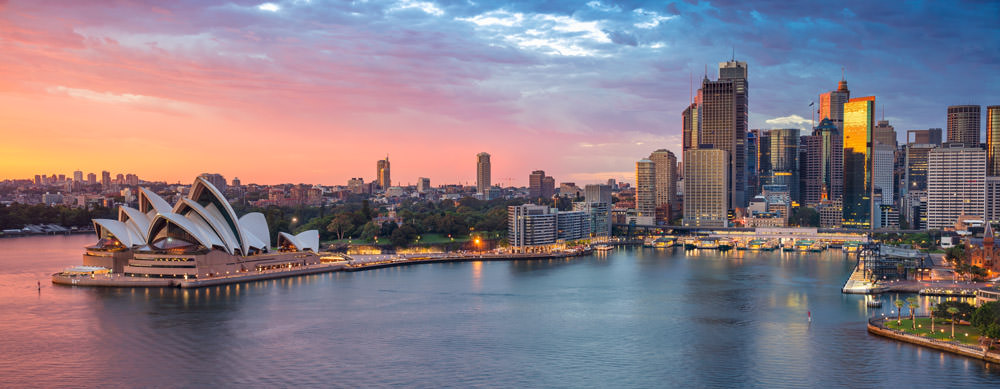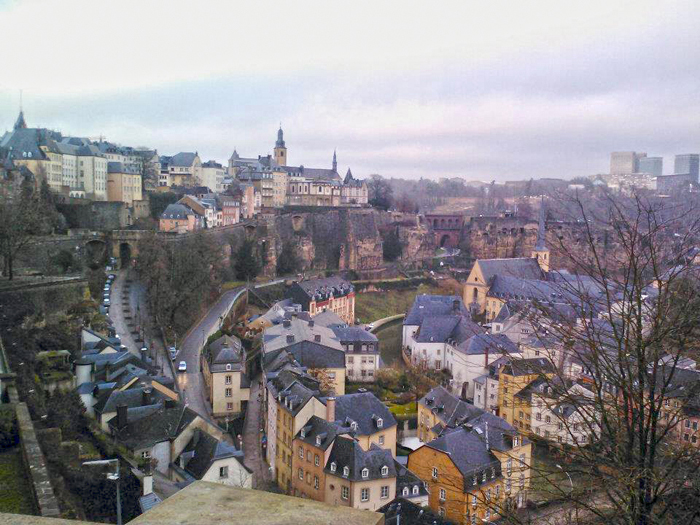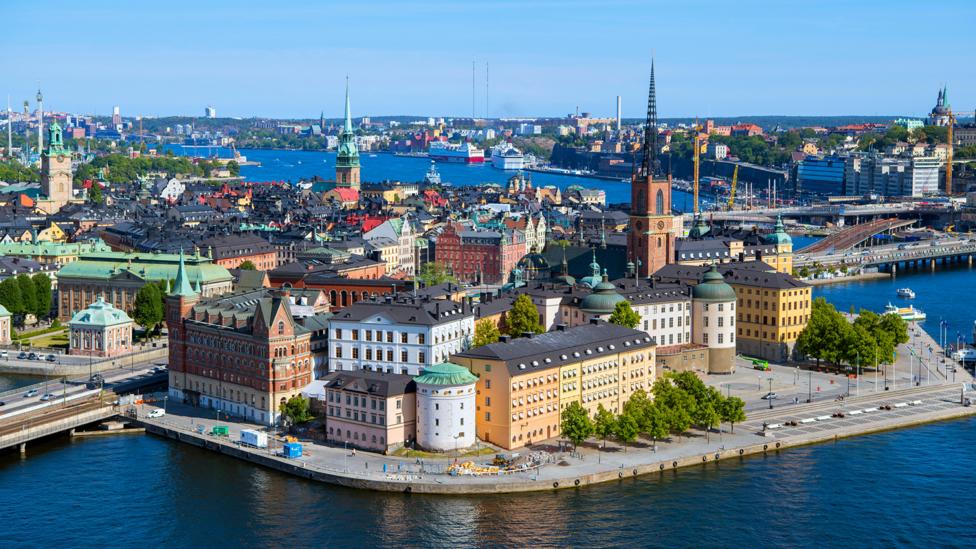13 of the Safest Countries in the World
*6-Minute Read*
It's unfortunate but unsurprising that my home country, the United States, is not on this list. We've been more divided than ever politically (or it, at least, seems that way), civil unrest is rising, and mass shootings have us looking over our shoulders more often. Are there safer places to live in or travel to? Well, yes and no. Yes, because there are countries with lower crime rates and have lesser chances of horrible events happening. No, because evil is everywhere. However, here are thirteen countries that were set at level one (the safest level) for travel advisories by the United States and have other accolades:
1) Australia
 |
| Sydney Harbour (Photo Credit: passporthealthglobal.com) |
Australia ranks fifth on both the "best countries overall" and "countries with the best quality of life" lists by the U.S. News and World Report. A reasoning behind the former is a gross domestic product (GPD) per capita of $1.4 trillion. A reasoning behind the latter is that the bulk of safety concerns lie in environmental factors: natural disasters (like the bushfires that occurred earlier this year), air pollution, and dangerous flora and fauna. However, Australia has excellent transportation systems and medical care.
2) Austria
 |
| Salzburg (Photo Credit: europe.stripes.com) |
Though they have been involved in external conflict, violent crime is rare in Austria. One of the country's larger concerns is theft, but its crime rate is just 23.23. The nation also has well-regulated tourism, medical care, and transportation (save some wintry weather conditions). Therefore, it's not shocking that Austria had the fourth best global peace index (GPI) in 2019.
3) Canada
 |
| Toronto Skyline (Photo Credit: US Department of State) |
Some of Canada's safety violations are specific to certain areas. For instance, in larger cities and tourist areas, theft is possible. Medical care is typically great, but emergency services are limited in remote areas due to the harsh weather. However, Canada is LGBTI-friendly, able to provide accessibility assistance, and hosts many students who are studying abroad. This open-mindedness has helped Canada be ranked #1 for quality of life for at least two years in a row.
4) Czech Republic
 |
| Charles Bridge in Prague (Photo Credit: travellens.com) |
Strikes and demonstrations are one of the larger concerns in the Czech Republic, but its authorities are ready to handle disruptions. There's also a small chance that a woman could be a victim of a "date-rape" drug, and that those in the LGBTI community may face discrimination in rural areas. Still, its crime rate is just 25.99. The country's cities have hospitals with emergency rooms, as well as specialty clinics. So even those within the 0.1% who got the Coronavirus are in good hands. Rules are also regularly enforced on the road and public transportation is typically fine.
5) Estonia
 |
| Medieval Tallinn (Photo Credit: Forbes) |
There are no homegrown terrorist organizations in Estonia, so the threat of an attack is low. There is a small chance that a violent demonstration or racial discrimination will occur. The most common safety issue is petty crime in urban areas, which is reflected in its 22.17 crime rate. Thankfully, medical care is available throughout the country, and its tourism and transportation are well-regulated.
6) Finland
 |
| Helsinki (Photo Credit: dtodayarchive.org) |
Finland is a leader in terms of both civil rights and education. The latter makes it a great place for students to study abroad. Only 0.1% of people in Finland came down with COVID-19, and they have access to excellent medical care. Public transportation is generally good, and most of the hazards on roads are due to ice. Its crime rate is 22.75, as the majority of safety concerns are petty street crime (i.e., pickpocketing).
7) Iceland
 |
| Reykjavik (Photo Credit: azamara.com) |
Iceland has been labeled as the safest nation in the world by multiple outlets for many years in a row. For example, the nation had the best global peace index in the world in 2019. A large reason why is the fact that there have been no terrorist incidents. Other violent crime is very rare. Also, Icelandic law requires that all public places be accessible for those with disabilities. There is very good medical in urban areas for, just say, the 0.5% of those who came down with the Coronavirus. Transportation options may also be limited in rural areas, especially during the winter. After all, it is a land of ice.
8) Luxembourg
 |
| Luxembourg City (Photo Credit: Wikipedia) |
Luxembourg has a history of demonstrations, but they are mostly non-violent. While thefts regularly occur on trains, the country's overall crime has been decreasing for the past several years. Road conditions are adequate and public transportation is well-developed. It is the wealthiest nation per capita in the European Union. It is also a diverse one, as 40% of its residents were born in foreign countries.
9) New Zealand
 |
| Skyline Restaurant in Queenstown (Photo Credit: theculturetrip.com) |
New Zealand is second to Iceland when it comes to the GPI. The nation has blossomed in regards to manufacturing, GPD per capita, and tourism since gaining independence. The majority of danger here, like its neighbor Australia, is environmental. Natural disasters (like the Whaakari/White Island volcanic eruption) do occur. Its rugged terrain can also make driving difficult, though the country keeps its roads in good condition. However, its public transportation is much less daunting and reliable. Its medical care is also reliable.
10) Norway
 |
| Northern Lights over Tromso (Photo Credit: destinationtromso.com) |
Like New Zealand, the majority of Norway's crimes occur in urban areas. There are thefts, drug trafficking, and gangs, particularly in the Oslo metropolitan area. Northern Norway is extremely remote, which limits medical care and roadside assistance. However, good medical care is readily available in cities and road conditions are typically fine. This high-income nation also has the fourth best quality of life. It is one of the world's leading petroleum exporters and is doing its best to integrate refugees and ethnic minorities.
11) Portugal
 |
| Benagil Cave (Photo Credit: trafalgar.com) |
Portugal has an adequate tourism industry, but emergency services may take a while to get to rural areas. The most common crime is theft, especially in touristy areas (like Tram 28). Road conditions are fair, but aggressive driving is a problem. Public transportation seems to be the safer route. But I shouldn't leave out that Portugal had the third best GPI in the world in 2019.
12) Sweden
 |
| Stockholm (Photo Credit: BBC) |
Sweden ranks third in quality of life, but it's not limited to citizens. Swedes are some of the most generous people in the world. The country has become a safe haven for refugees, and humanitarian aid programs are well-taken care of. Sweden also has an adequate tourism industry and excellent medical care (with emergency services). Though Sweden remains neutral in war, the national is subject to terrorism incidents. Also, violent crime, thefts, and international financial scams do occur in cities like its capital (pictured above). However, demonstrations are usually at low levels and both public and private transportation are feasible.
13) Switzerland
 |
| Lausanne (Photo Credit: The Times UK) Switzerland was given the title of "overall best country" by the U.S. News and World Report for at least two years in a row. Its unemployment and crime rates are low and its GPD per capita is high ($705.5 billion). Road conditions are fair, but its public transportation is one of the world's best. And even though demonstrations, theft, and Tick-borne illnesses are present, the nation's medical care is excellent. If you'd like me to list the most dangerous countries in the world next, comment down below or like this post on social media. - Liv |
Comments
Post a Comment